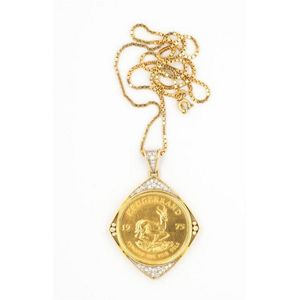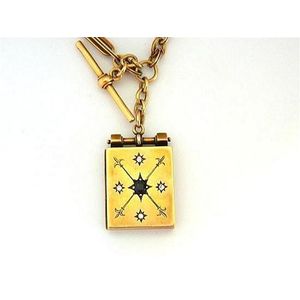Emerald and Diamond Orchid Drop Earrings
You must be a subscriber, and be logged in to view price and dealer details.
Subscribe Now to view actual auction price for this item
When you subscribe, you have the option of setting the currency in which to display prices to $Au, $US, $NZ or Stg.
- Bezel - On a clock or watch, the bezel is the metal frame into which the watch or clock glass is fitted. In clocks, the bezel may include a hinge and a flange, in effect a door to the face of the clock. In jewellery the bezel is a band of metal with a projecting lip that holds the gemstone in its setting.
- Pave Setting - Pave setting is a style of setting stones in jewellery where the small stones are placed close together in holes drilled in the metal, the burr of the metal around the stone being pressed over the edges to hold the stone in position.
- Emeralds - Emeralds have been used in jewellery making for thousands of years, and are prized for their deep green colour, which is caused by the presence of chromium and vanadium in the mineral beryl. Because of their rare colour, emeralds are often more valuable than diamonds of a similar size and quality. In jewellery making, emeralds are typically cut into round or oval shapes to maximize their color and clarity. They are often set in gold or platinum and used as the centrepiece of a piece of jewellery, such as a ring or necklace. They can also be used in combination with other gems, such as diamonds, to create intricate and beautiful designs.
- Brilliant Cut - In their naturally occuring state diamonds have little life or sparkle and for many centuries were simply cut in half and worn in amulets. Invented at the end of the 17th century by a Venetian diamond cutter, a "brilliant cut" diamond has 58 facets arranged in a regular geometric relationship, with 33 above the crown and 25 below on the pavilion.
The introduction of the brilliant cut increased the popularity of diamonds in jewellery as it was the first cut to reveal the fire of the diamond, with the light being internally reflected from one facet to another, and was superior to the previously used table cut and rose cut.Variants to the brilliant cut have emerged since the end of the 17th century, but the popularity of the original brilliant cut has continued to the present time, where it is still the most commonly found cut.
.
This item has been included into following indexes:
- earrings, diamond - diamond and emeralds 523
- earrings, gold
Visually similar items

Two matching silver spirit labels, Dry sherry, & 'Sherry'. Both marked sterling, Wt. 20g approx (total).

Antique sterling silver & enamel Edward VII coronation souvenir spoons, marked CSFS, London, 1901, 14 cm long

A Krugerrand and diamond pendant necklace, centring a one ounce 1975 Krugerrand in an 18ct gold surround and two tone bale set with 32 round brilliant cut diamonds on a box chain. Length 55 cm. Wt. 53.5g.

An Australian 15ct yellow gold fob chain and 9ct yellow gold sapphire, diamond locket a 15ct yellow gold fob chain made by Larard & Son, Melbourne together with a 9ct yellow gold rectangle shaped locket, set with one oval Australian sapphire and for round
